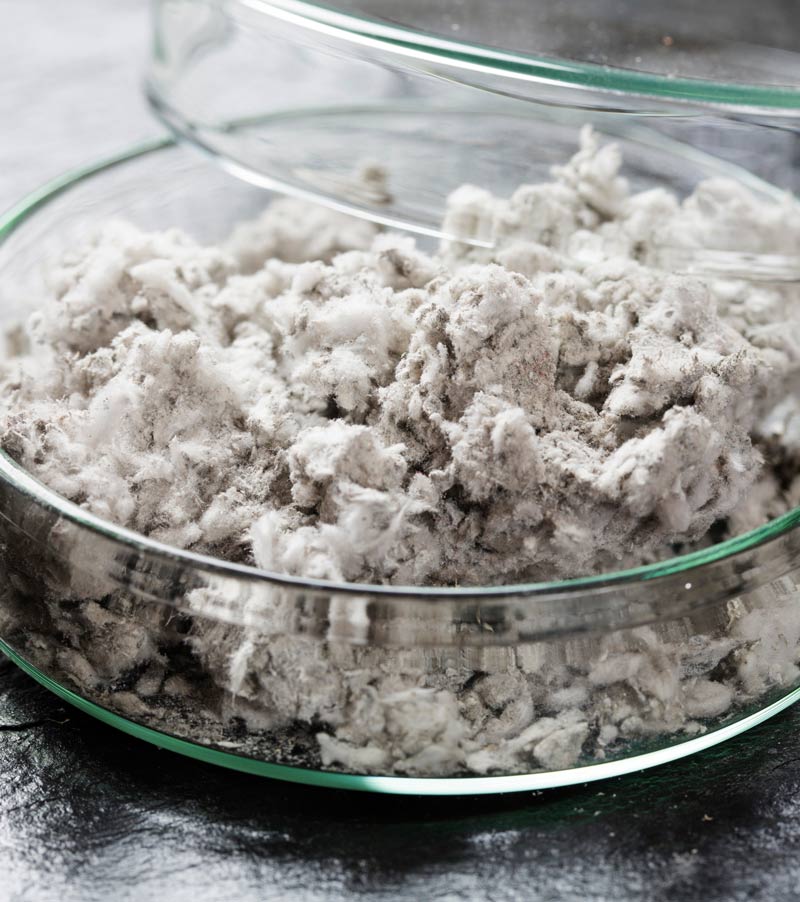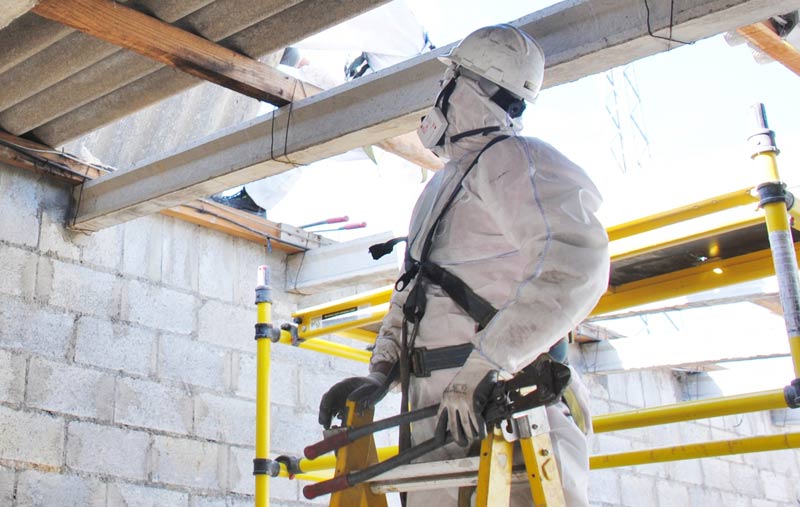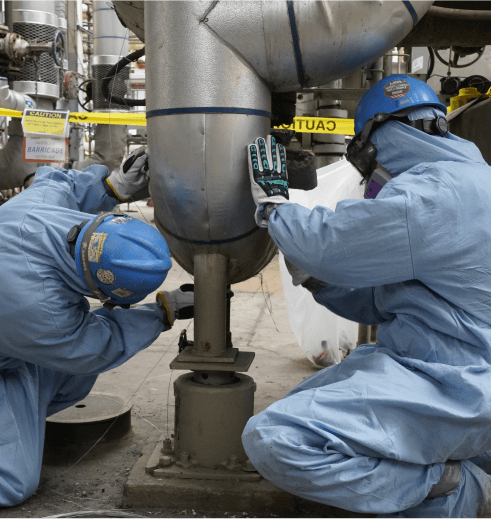The Asbestos Abatement Industry
Despite being banned in the late 1970s, many buildings still contain asbestos, which was used as a flame retardant, thermal system insulation and in a variety of other materials. For decades, asbestos was used in Mechanical Insulation to insulate pipes, boilers, steam systems, hot water systems and plumbing systems.
Contractors affiliated with the Mechanical Insulators Labor Management Cooperative Trust (LMCT) work safely to abate Asbestos-Containing Mechanical Insulation.
While it is the best permanent option, removal is not the only option to stop asbestos exposure. The term abatement is also used when asbestos is enclosed or encapsulated in order to be removed at a later time. Encapsulation allows individuals to safely work near asbestos until the eventual removal takes place.
Asbestos In Building Materials
The only way to truly know if asbestos is in building material is to remove a sample and have it tested by a competent laboratory. Depending on how and where asbestos was applied, it may not pose any risk to most building users.
If the asbestos fibers cannot become dislodged from the material, they cannot be inhaled, and the asbestos poses no risk. However, asbestos poses hazards when its fibers can be inhaled. An example would be when maintenance personnel who are not properly trained attempt to fix damaged Mechanical Insulation. Even if the workers are protected, by removing the Mechanical Insulation off a pipe, they may release asbestos fibers into the air, which then may be inhaled by others in the building.
Since asbestos is a carcinogen, any work that may disturb asbestos must follow stringent safety procedures.
When asbestos fibers easily turn into airborne dust, the material is considered friable. Unfortunately, mechanical insulation is extremely friable, whereas asbestos floor tile is considered non-friable. Friable materials have a lifespan between 20 and 40-plus years, whereas non-friable materials, such as asbestos roofing tiles, have a lifespan of 50 to 100 years and beyond.
Thanks to research and other action, production of this harmful material was banned in the U.S. in 1978 and in Canada in 2011. In 2018, Canada enacted a complete ban, and the U.S. followed in 2024. Despite these bans, installers were still permitted to use the remaining stock of asbestos material in buildings and construction projects throughout the two countries. Buildings constructed in the U.S. as late as 1986 may contain asbestos.

Remediating Asbestos
Prior to removing any item containing asbestos, the project owner has a legal duty to verify that the asbestos abatement contractor can properly handle and dispose of the asbestos.
The LMCT encourages a building owner to reach out to one of our affiliated contractors to request a sample of the building’s Mechanical Insulation and test it to determine if it contains asbestos. Testing is recommended if maintenance is to be performed on the building, potentially exposing building workers, employees and visitors to asbestos.
Contact one of our affiliated contractors to safely perform the work on your asbestos abatement project.


Find an LMCT-Affiliated Contractor
Our affiliated contractors uphold a high standard of quality of work and pay for their employers to receive industry-leading instruction through a Department of Labor registered apprenticeship program. Discover the difference of trusting an LMCT-affiliated contractor for your next project.
The LMCT partners with the Insulators Union throughout the U.S. and Canada performing high quality work in the following industries:
• Maintenance and New Construction
• Industrial High Temperature
• Pads and Blankets
• Storage Tanks and Vessels
• Boilers
• Chillers
• Metal Cladding/Weather Barriers
• Commercial Heating and Cooling
• Vapor retarders and barriers
• Asbestos abatement
• Firestop and Smokeseal
• Nuclear Specialized Applications
• Mechanical Insulation Evaluations
• CUI Programs
• Specialized Insulations